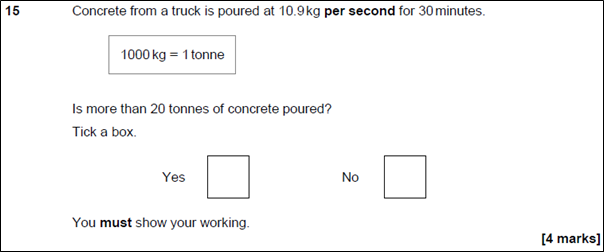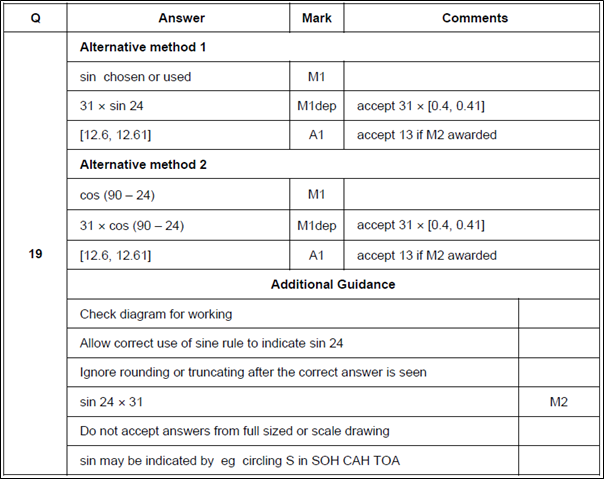GCSE Maths results day 2024
By Dave Taylor
Published 22 August 2024
How nice is it to have returned to a ‘normal’ school year? (If there ever was such a thing!). We’re seeing the remnants of the response to the pandemic gradually fading with a return to pre-COVID standards.
I left the classroom at Easter, and I’m experiencing all the feelings that I did for the preceding 16 years. It always felt a little bit like Christmas Eve – the excitement of unwrapping presents as a child, and the anxiety of finding out whether you bought the right colour T-shirt as a parent. I hope that the learners I worked with this year achieve their potential and go on to be successful in all that they do.
Congratulations
On that note, I’d like to congratulate every learner receiving their results this summer for their hard work and resilience over the last 5 years, as well as every teacher for their incredible work in supporting their learners to achieve their potential.
Higher attainment
Last summer we unveiled our new approach to GCSE papers and this summer’s exams have shown further improvement in average student attainment at the Foundation Tier, and a significant improvement on both summer 2022 and 2023 on the Higher Tier.
Students who sit AQA mathematics exams are more successful this summer, with both Tiers achieving significantly higher marks than in 2022, despite the absence of advance information.
| Average marks achieved | |||
|---|---|---|---|
| Tier of Entry | Summer 2022 | Summer 2023 | Summer 2024 |
| Foundation | 117.72 | 128.20 | 129.54 |
| Higher | 146.20 | 142.81 | 150.77 |
Deserved grades
An improvement in student attainment also leads to a slight increase in grade boundaries, and we’re on the right track to finding the consistency that we held before the improvements in accessibility. These can be seen in comparison to summer 2023.
| Grade | 9 | 8 | 7 | 6 | 5 | 4 | 3 | 2 | 1 |
|---|---|---|---|---|---|---|---|---|---|
| Foundation 2023 | 189 | 158 | 117 | 76 | 35 | ||||
| Foundation 2024 | 186 | 157 | 117 | 77 | 37 | ||||
| Higher 2023 | 214 | 186 | 158 | 125 | 92 | 59 | 42 | ||
| Higher 2024 | 219 | 191 | 163 | 129 | 95 | 61 | 44 |
Accessible questions
The new style of papers is starting to bear fruit, and the questions that we’re setting are allowing learners to show what they know in terms of mathematics. Learners are responding well to the adjusted questions, and this was particularly noticeable across these questions:

June 2024 Foundation Paper 1, Question 23
The expected facility was 35%, actual facility 51%. The structure of information is key to improving success rates.
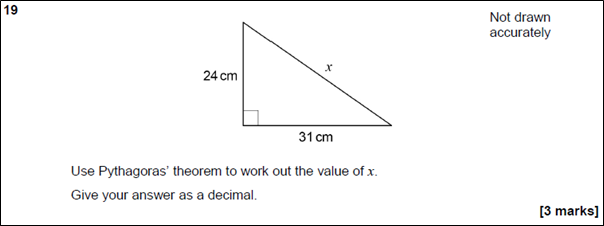
June 2024 Foundation Paper 3, Question 19
The expected facility was 35%, actual facility 46%. The usual facility is 25 – 30%, but with the signposting of Pythagoras expected, the facility was increased.
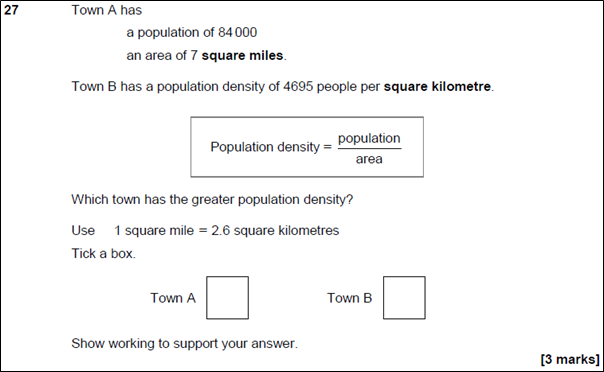
June 2024 Foundation Paper 3, Question 27
The expected facility was 20%, actual facility 40%. Applying all techniques to improve accessibility.
June 2024 Higher Paper 2, Question 15
The expected facility 50% and the actual facility 95%. This is structured to improve accessibility.

June 2024 Higher Paper 3, Question 17a
The expected facility was 40% and the actual facility 84%. Note the reduced word count to improve accessibility.
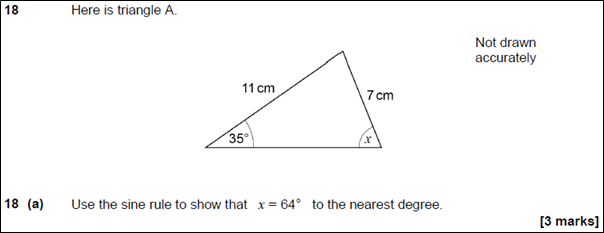
June 2024 Higher Paper 3, Question 18a
The expected facility was 40% and the actual facility 62%. Signposting the use of the sine rule as this is an AO1 question, but still a challenging question to show that the angle is 64 degrees.
Facility as we use it is best defined as "the mean percentage of marks achieved by a student attempting a question" e.g. a 2-mark question with a 75% facility means the mean score was 1 and a half out of 2.
Rewarding mark schemes
Our examiners are experts in assessing learners’ knowledge, and they’re frequently looking for opportunities to see them doing good mathematics. When a learner writes down mathematics that would lead them along the right path to a correct answer, our examiners are rewarding them for doing so.
This is noticeable in the below examples from our mark schemes.

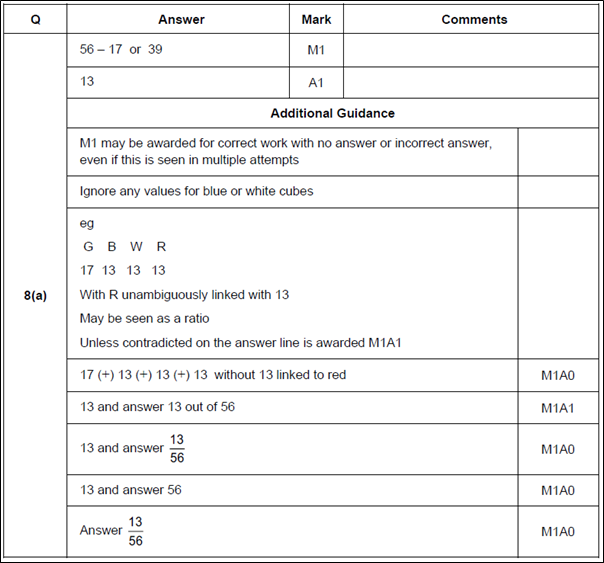
June 2024 Foundation Paper 2, Question 8a
A simple example of where the full method isn’t required for M1, but the method is incorporated into the A mark. This spreads the marks better between 1 mark and 2 marks and rewards a good start to the question.

June 2024 Foundation Paper 2, Question 19
The mark scheme rewards identification of the correct trigonometric function for the first mark.

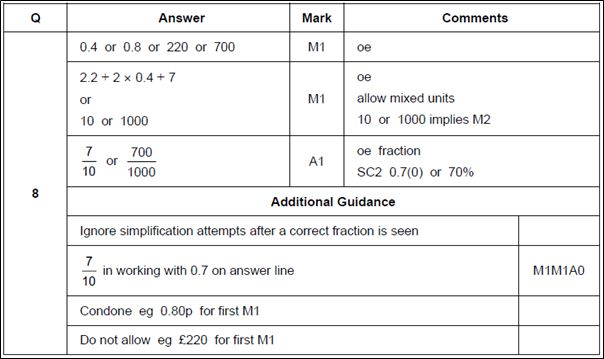
June 2024 Foundation Paper 3, Question 8
Any correct starting calculation is rewarded with M1.

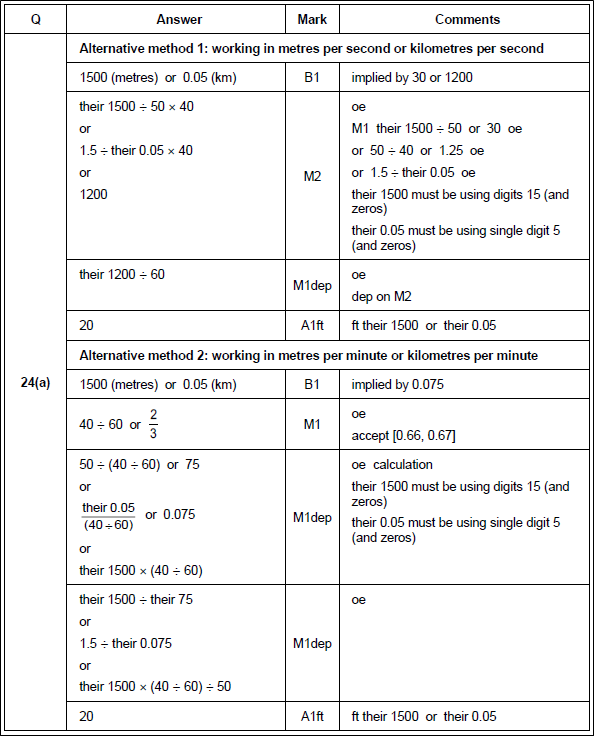

June 2024 Foundation Paper 3, Question 24a
If the initial conversion is completed incorrectly, 4 marks are still available on ft, rewarding good work from students and differentiating between them more fairly.
You can access our on-demand ‘Mark scheme guidance and application’ professional development course here, and access the mark schemes on All About Maths.
Want to find out more?
Discover the full story behind this summer's mathematics exams. Join us at our Curriculum Connect events this September for in-depth exploration and exclusive insights. Secure your spot today!
- GCSE and Level 2 Further Maths: Exploring summer 2024
- GCSE Statistics: Exploring summer 2024
- GCSE Maths: Introduction to AQA Stride
You might also like to join us for #MathsConf36 at Astrea Academy Sheffield on Saturday 12 October.
Author

Dave Taylor
About the author
Dave has spent 16 years as a teacher of mathematics, TLR holder and Head of Department in Leeds secondary schools and CPD lead nationally, and is now Head of Curriculum for Mathematics at AQA.
Related content
- Maths qualifications
- Shaping the future of GCSE Mathematics
- Shaping the future of Level 2 and Level 3 Mathematics
Share this page
Connect with us
Contact our team
Maths
Tel: 0161 957 3852
Email: maths@aqa.org.uk
8am-5pm Monday to Friday
Book a call with your account managerSign up for updates
Receive the latest news, resources and support from AQA.
